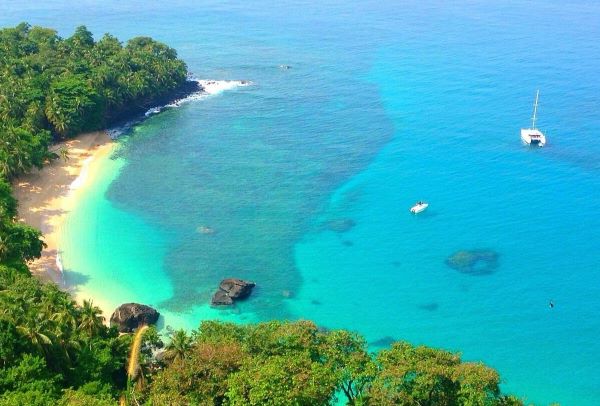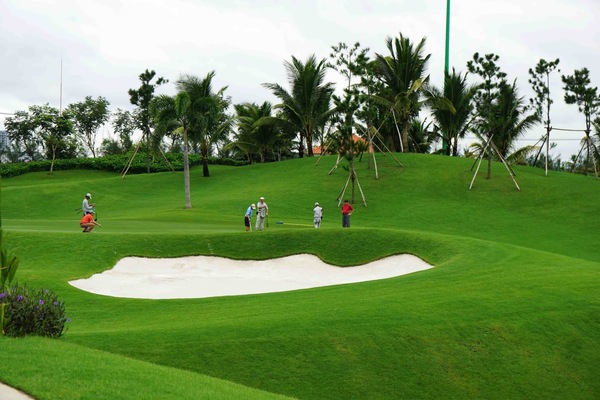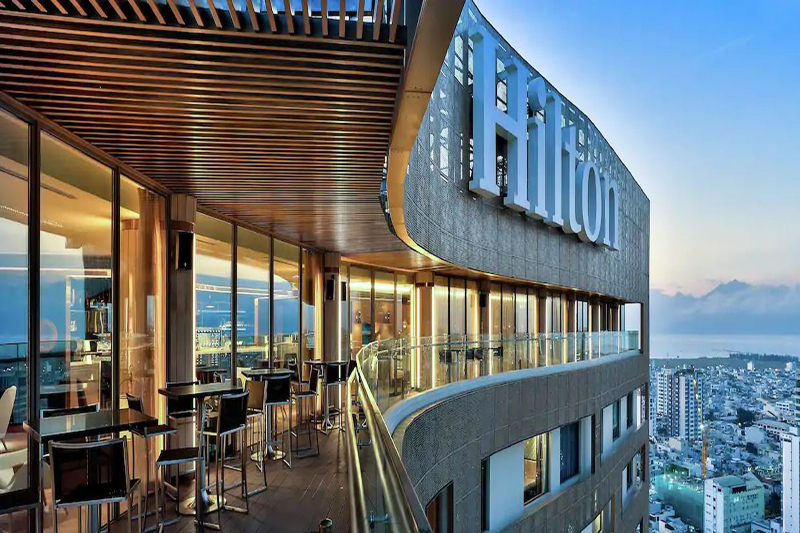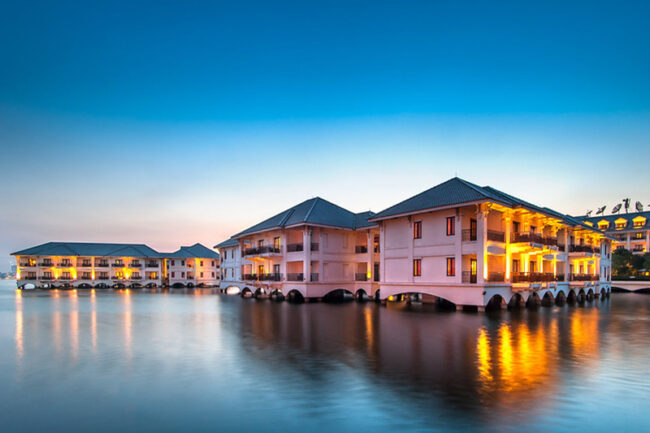Noone can tell the exact number of ships have travelled via this sea route as well as how many of them were wrecked in the rough ocean because of the storms, hidden rocks and also fires. However, those wrecked ships accidentally left in the ocean a treasure, which is so priceless that when being fished out, they have been contemplating at many domestic and international auctions and outstanding museums.
Vietnam features about 3,260km of the seashore. At dawn, ancient people exploited and challenged the East Sea. However, the sea route was crowded just a few hundreds of years ago. Since goods ships of Dai Viet or China traveled to India or the West across the East Sea, this sea route has become an international route.
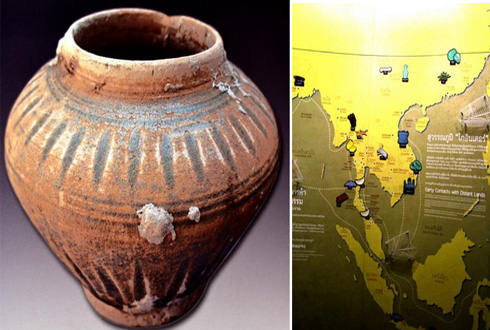
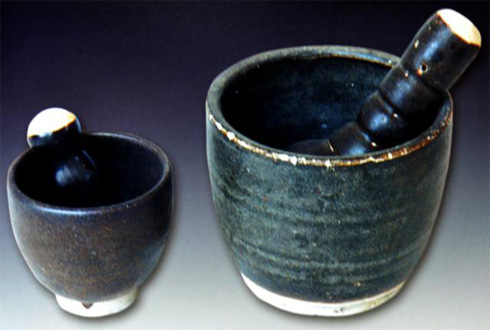
Vietnamese people considered goods on wrecked ships as a big property. Ancient emperors of the Nguyen dynasty founded militias to Hoang Sa to find products from wrecked ships and protect the sea’s sovereignty. Since then, many sunk ships have been found and exploited. For nearly 20 years, the under-water archaeology has revealed many secrets of the history from these ships. Recently, in 2012, archaeologists found a wrecked ship carrying many valuable porcelains such as censer, tablewares and basins of the 14th century’s Yuan dynasty (China) in Chau Thuan, Binh Chau, Binh Son, Quang Ngai. The ship was found at the depth of 3-4m near the shore. At present, they are prepareing for the excavation, which promises to gather the latest pottery collection of wrecked ships.
The wrecked ship in Cham islet
Noone can call the name of the wrecked ship in Cham islet, Hoi An. Archaeologists had excavated the ship for two years, from May 1997 to June 1999. They witnessed and drawed the ship with 29.4m in length and 7.2m in width. At the depth of 70 – 72m, the ship was well-preserved and made of teak wood. It had 19 cabins and structured with firm wooden bars. The ship carried more than 240000 potteries, which are now precious antiques of the 15th century. A part of this treasure is remained in museums of the country while the rest of it was auctioned in America in 2000. The wrecked ship of Cham islet carried potteries of Chu Dau pottery village (Hai Duong) and Thang Long pottery. In addition, archaeologists also found personal things of sailors that are also regarded as antiques such as Chinese and Thai potteries. The huge number of potteries found on this ship revealed that Vietnamese potteries had their own brand names, which were exported to other countries.
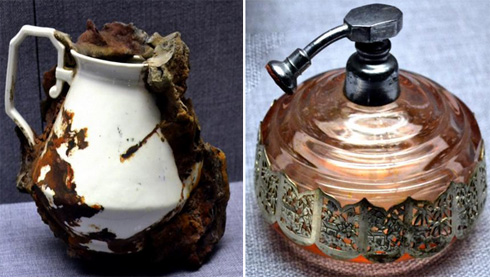
Found potteries were diverse such as pots with kendy spouts, censers, bowls, sphere crocks, tablewares, boxes and vases. There were also round statues, which had been decorated harmoniously such as pots shaped in dragon, phoenix or peach. Some ceramics such as pot shaped as a Chinese four-chord lute, crab-shaped boxes and buffalo-shaped ink slabs made up a majority. There were also small ceramics such as toys in different shapes as fish, toads, elephant and human riding horses. Blue flowered ceramics reflected the life of local Northern people with simple images such as fighting-cocks, monkey mother holding her children, birds, fish, bees, butterflies and dragonflies.
The wrecked ship in Ca Mau
Sunk at the latitude of 07o41’12’’ and the longtitude of 105o29’18’’. The ship was excavated in two periods, in which one was from August 1998 to January 1999 and the second one was from April to October 1999. At the depth of 35m, the ship was not in its original form but through its vestiges, it was said to be 24m in length and 8m in width. The excavation was held by National Museum of History in the cooperation with Museum of Ca Mau and Visal company, where provided professional divers.
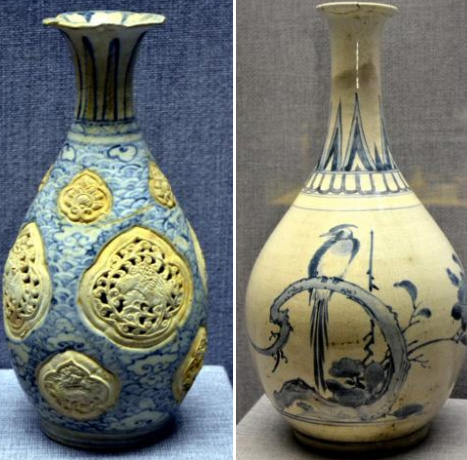
During the excavation, 60,000 antiques were fished out. In addition to personal things of sailors, goods were mainly white porcelains with blue patterns and colorful enamels of Jingdezhen porcelain shop (Jiangxi) and Guangzhou (China). Basing on dated porcelains, archaeologists assessed these were porcelains of In Jen Emperor, the Qing dynasty (1723 – 1735), when it was Le Trung Hung dynasty in Vietnam under the three reigns of Le Du Tong, Le De Duy Phuong and Le Thuan Tong. Among many beautiful porcelains, some of them had epigraphy such as 28 blue-flowered porcelain cups with four words “In Jen nian di” (made in the In Jen dynasty).
Notably, some Chinese potteries such as feeding bottles, wine bottles with handles, plates decorated with flowers, leaves and scenery of Holland, were made as the requirements of European customers. It means that goods found on the wrecked ship in Ca Mau were exported to Europe. There were nearly 600 porcelains, in which household plates and cups were mostly excavated. Products were decorated with different patterns such as the Longevity, lotus leaves, apricots, fir-trees, bamboos and charming scenery. Decorations on products expressed Chinese legends such as human riding the horse or buffalo, the dancer or beautiful woman. Besides, simple subjects such as boiling water, fanning of fire, casting a net, raising the fishing net, cock-fighting and fishing-tackling are also seen.
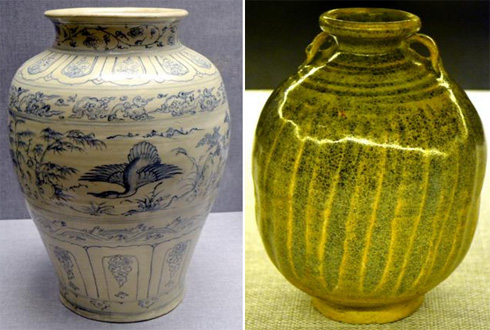
The collection of the wrecked ship in Ca Mau was also valued by…money. In 2007, the international auction organization, Sotheby’s sold some ceramics found on this ship in Holland. Some products were rated at very expensive price, including six blue-flowered cups of the Kangxi period at 120,000 – 150,000USD; two blue-flowered bowls of the In Jen period at 31.6 – 47.4 thousand USD.
About the name of the ship, according to the archives of some European countries and what was written in the book: “The fate of wrecked ships” by Nigel Pick Ford and publishe din Spain in 1994, the ship was believed as Alblasserdam of the Dutch East India company. The ship carried goods from Guangzhou, China to Holland and was sunk in 1735 in the East Sea’s area of Vietnam. This ship was burnt and wrecked in 1735 in Ca Mau and then excavated.
The wrecked ship in Binh Thuan
The ship was excavated in 2001 and 2002 with the participation of archaeologists, divers of Visal company and foreign experts such as doctor Michae Flecker. The ship was also remained its shape of 23.4m in length and 7.2m in width with 25 cabins. The ship was found at the depth of 39 – 40m. Until now, the origin of the ship is unknown, but this is a trading ship.
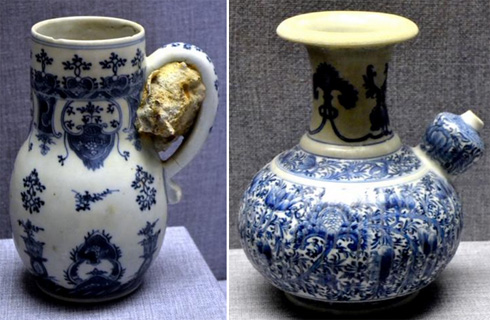
Goods on the ship are mainly porcelains of many famous porcelain shops such as Zhangzhou (Fuqian) and Guangzhou (Guangdong) of China. Scientists said the ship was wrecked in the Wanli reign of the Ming dynasty, China (1573 – 1620). After the excavation, some porcelains on the ship were auctioned by the famous Australian Christie’s and Pierre Berge & Associes for famous museums in the world.
There were a variety of porcelains with different enamels such as deep blue-flowered porcelains, white and brown ones, black brown ones, green ones and colorful products. Products included diverse types such as bowl, basin, plate, pot and vase. In the collection found on this ship, the blue-flowered plate set found in the Minh dynasty was unique qith 9 small plates forming a flower with many petals.
Products decorated by pens were also various and close to paintings of this period such as a couple of ducks swimming in the river or lotus flowers. In the plate set with 9 small plates were decorated by the Longevity symbol in the middle plate and other fairies in the others. Products were also designed with images of animals such as dragon, phoenix or lion, deer and horse. In addition, images of people looking at the moon, stork, fish or shrimp. The decoration of Han scripts was also interested with Prosperity, Longevity, Spring, Good Luck, Pearl and more in Han scripts and beautiful backgrounds of flowers and leaves.
The wrecked ship in Hon Dam
The ship was excavated in Phu Quoc, Kien Giang in May 1991 by divers of Visal company at the depth of more than 17m. The ship was buried 2m in the sand. According to experts, the ship was nearly 30m long and 7m wide. Ceramics on the ship was clung by shipworms. Excavators found 16,000 antiques, in which most of them were celadon or brown enamel. These ceramics were made in Sawankhalok and Sukhothai pottery shops in Northern Thailand in the 15thcentury.
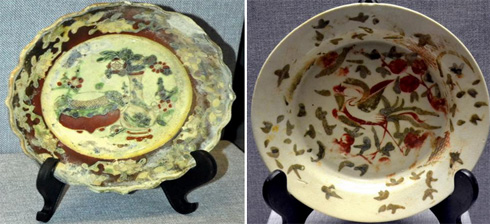
Thai ceramics fished out were mostly household appliances for normal people. These products featured celadon enamel or Dong Thanh enamel. Some of products were brown, light black, yellow or white grey. In addition to enameled ceramics, non-enameled products, which had cupped mouths, immoderately body and grey upper body. Some products looked like Vietnamese deep blue ceramics such as the pear-shaped wine pot. There were also many sphere-shaped or pineapple-shaped products. Some jars were decorated with the daisy petals. Celadon cups were like the celadon cups of the Song dynasty in China.

Another type of exported Thai pottery was round statue such as the statue of rabbit with white enamel and blue flowers. Its eyes and ears were clearly seen. Thai people created this product as a pot with a short spout and an insulated round body. The round rabbit was decorated with peacock’s feather, flowers and leaves.
The wrecked ship in Hon Cau
The ship was excavated in Vung Tau, 1m in the sand and 40m from the surface by divers of Visal company, divers and archaeological experts from America, England and Canada. The ship was 32.71m in length and 9m in width. More than 60000 antiques, which are mainly Chinese porcelains made in 1690 in the Kangxi reign of the Qing dynasty, the same period of the Le Hy Tong reign in Vietnam. Found deep blue porcelains include ornamental jars with covers, pots, cups, vases, pear-shaped vases, boxes, plates and statues of Guanyin, Longevity, lion and human. Many products were clung by shipworms. Most of products were decorated with flowers and leaves or Chinese legends. These products were made in Dehua pottery shop, Fuquian, China.
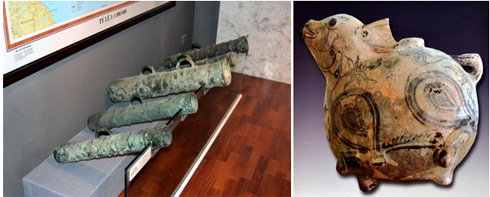
According to scientists, this ship was burned during its transportation from China to other countries through the sea route across Vung Tau. Potteries of the Kangxi period found in the wrecked ship in Hon Cau were valuable in the international antique market. Therefore, after excavation, nearly half of the antiques were auctioned in Holland by Christie’s company.
At Bai Chau, about 4 sea miles from Vung Tau at the depth of 15m, archaeologists used to excavate another wrecked ship. This ship provided a precious collection of glassy and crystal appliances and potteries. Remarkably, a white-enameled tableware, including oval and round plates, spice boxes, teacups and glasses of Western people was carved with the phrase: De Pobe-Paris and J.P France. In addition, there were also glassy stuffs such as cup and porks and crystal things such as plates and trays. Archaeologists said this collection was dated in the 19th century and made in France. This unlucky ship was carrying goods from the West to Vietnam.
Especially, there were more sunk ships in the sea of Ba Ria – Vung Tau than in any other seas. In 1990s of the 20th century, scientists found and excavated 5 wrecked ships with many precious antiques such as the bronze cannon found in the wrecked ship at Bai Rang in 1992. Also in this year, archaeologists found another sunk ship in Hon Ba sea with many antiques. The excavatio of this ship found 559 antiques, including two white-enameled ceramics with blue patterns. There were 527 household terra-cottas with ivory or brown enamels or without enamel. Most of these products were not decorated with flowers. Some ceramic pans and small jars or bronze coins, boxes and cigarette-holders were also found. This ship was believed to carry appliances from the Central Coast to Southern Vietnam.
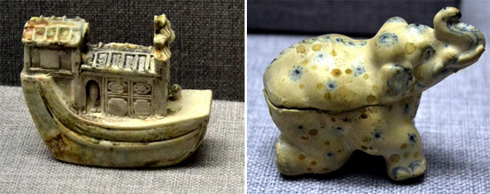
There has been a huge number of antiques found on some wrecked ships in Vietnam. These antiques not only bring about economic values in many international auctions but also reveal artistic and historical values. They tell us about unlucky ships and let us call their names. In addition, they tell us about the trading path through Vietnam and across the East Sea under the sovereignty of Vietnamese people.









